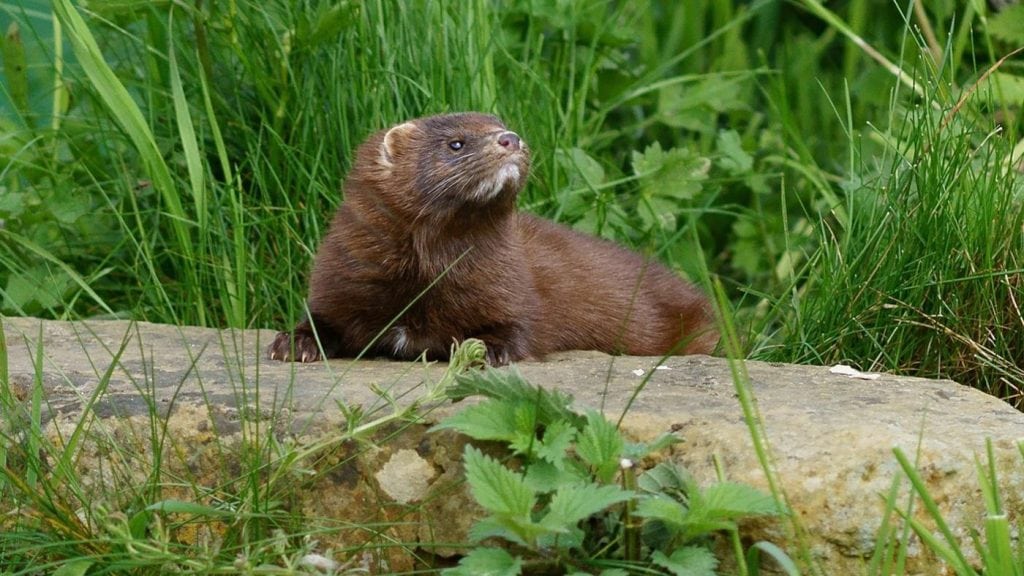The lifespan of minks is about 3 years in the wild and up to 10 years in captivity. The body is long and slender with short legs and a pointy, flat face. The toes are partially webbed, showing the mink’s semi-aquatic nature.
A mink’s rich glossy coat in its wild state is brown and looks silky, but farm-bred mink can vary from white to almost black. Their pelage is deep, rich brown, with or without white spots on the underparts, and consists of a slick, dense underfur overlaid with dark, glossy, almost stiff guard hairs.

Mink are very territorial animals. A male mink will not tolerate another male within its territory, but appears to be less aggressive towards females. Generally, the territories of both male and female animals are separate, but a female’s territory may sometimes overlap with that of a male. Very occasionally it may be totally within a male’s.
They are carnivores. The diet of mink varies with the season. During the summer it consists of crayfish and small frogs, along with small mammals such as shrews, rabbits, mice, and muskrats. Fish, ducks and other water fowl provide additional food choices. In the winter, they primarily prey on mammals.















